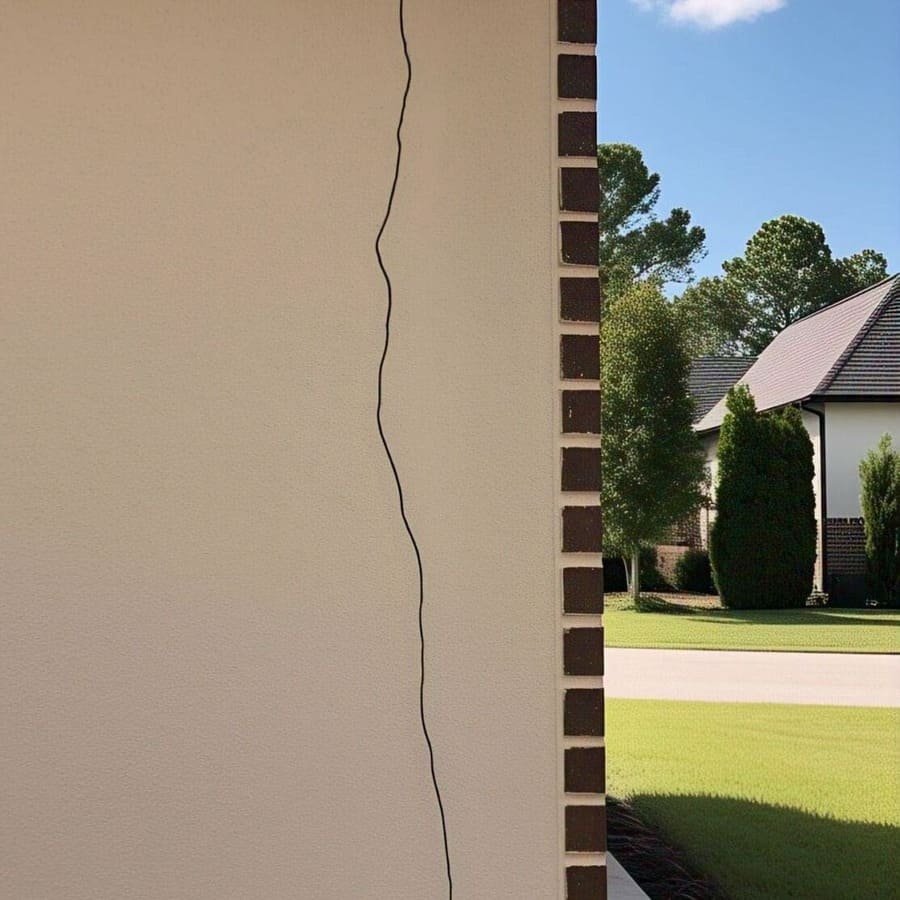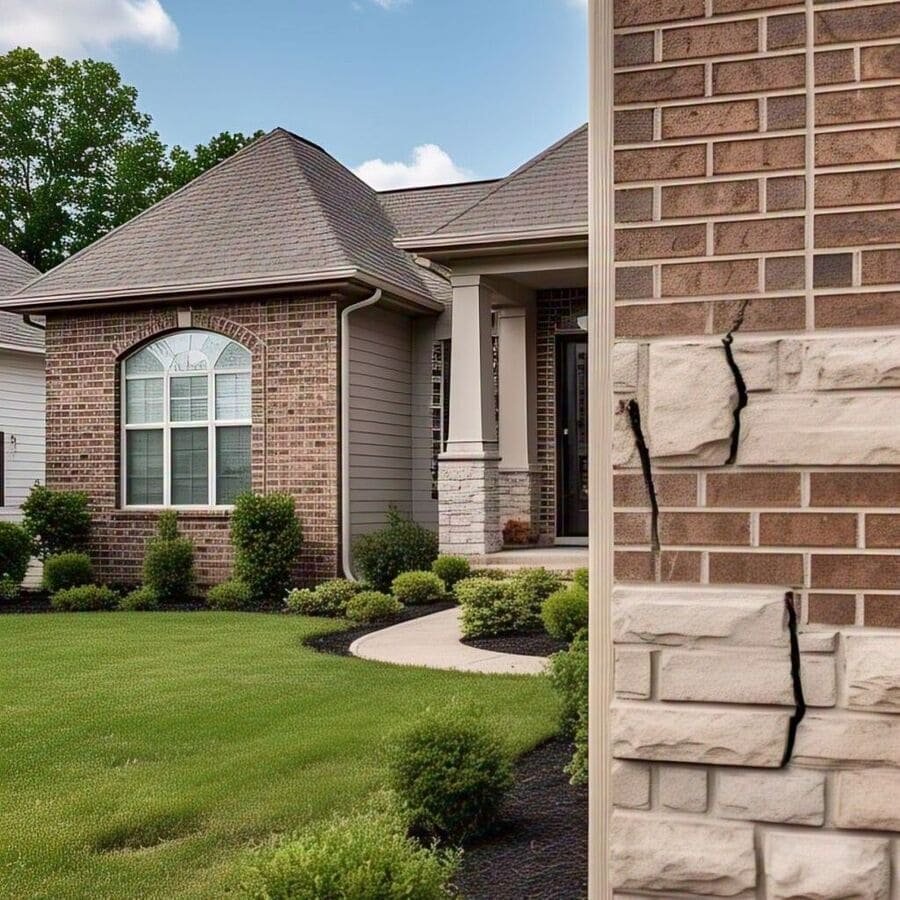When you think of your home, what’s the first thing that comes to mind? The roof? The walls? The cozy living room? But there’s something even more crucial beneath it all—your foundation. And guess what? A big part of what makes or breaks your foundation is the soil it rests on.
That’s right. The soil beneath your home plays a huge role in whether your foundation stays strong or starts cracking and shifting. But how exactly does soil impact your foundation? And more importantly, how can you manage it to avoid foundation problems?
Let’s break it all down.

Soil and Foundation: An Unlikely Pair
Soil and foundation go hand in hand. Think of it like a relationship. For your foundation to stand strong, it needs solid, supportive soil beneath it. When that soil shifts, changes, or moves, your foundation can struggle to keep up.
What does soil do to your foundation?
- It supports the weight of your house: Your foundation depends on soil to keep it upright and stable. If the soil is unstable, it can cause cracks, uneven floors, and shifting.
- It absorbs moisture: Different types of soil absorb water differently. Some soil types can hold a lot of water, while others don’t retain moisture at all. This can cause the soil to expand or shrink, creating pressure on your foundation.
- It can erode: Soil can erode over time, especially if it’s not properly managed. Erosion can leave gaps around your foundation, causing it to settle or shift.
So, why should you care about your soil? Well, the health of your foundation depends on it. If the soil is unstable, your home might experience some serious problems. But don’t worry, with the right care, you can manage the soil and keep your foundation strong.
Call us for any foundation issues or basement waterproofing billings MT
The Main Soil Types That Affect Foundations
Not all soil is created equal. Some types of soil are more prone to causing foundation issues than others. Here’s a rundown of the most common soil types that affect foundations:
1. Clay Soil
Clay soil is a real troublemaker when it comes to foundations. It’s heavy, dense, and holds a lot of moisture. This means it expands when it’s wet and shrinks when it’s dry.
Why clay soil is bad for foundations:
- It can cause your foundation to settle unevenly.
- When clay shrinks, it can create gaps, which leads to cracks in your foundation.
- When it expands, it pushes against your foundation, causing pressure and movement.
How to manage clay soil:
- Water management: Keep the soil consistently moist to prevent it from shrinking and expanding too much. Use a soaker hose or sprinkler system to water the area around your foundation.
- Foundation watering: During dry spells, water the soil around your foundation to help prevent shrinking.
- Proper drainage: Ensure that water drains away from your foundation, so you don’t get pooling water or flooding.
2. Sandy Soil
Sandy soil is made up of tiny particles that don’t hold water very well. It drains quickly, which sounds great, right? Well, not always.
Why sandy soil is bad for foundations:
- It doesn’t provide enough support for the weight of your house.
- It erodes easily, leading to instability around your foundation.
- It shifts easily, causing settling issues.
How to manage sandy soil:
- Compaction: Make sure the soil is compacted properly around your foundation. You may need to have the soil professionally compacted before building to ensure stability.
- Landscaping: Consider adding plants and grass around your foundation to help hold the soil in place and prevent erosion.
- Use of gravel: Adding gravel around your foundation can help improve drainage and prevent water from eroding the soil.
3. Loamy Soil
Loamy soil is a mix of sand, silt, and clay. It’s usually the best kind of soil for a solid foundation because it balances drainage and support.
Why loamy soil is good for foundations:
- It drains well, which prevents water from pooling around your foundation.
- It doesn’t expand or shrink dramatically like clay soil.
- It provides a solid base for your foundation.
How to manage loamy soil:
- Keep it balanced: Loamy soil usually doesn’t cause many problems, but it’s important to keep it properly watered. You don’t want it to dry out or become too saturated.
How Soil Affects Your Foundation: Real-Life Examples
Let’s bring this to life with a few examples.
- The Shrinking Foundation: Imagine you’ve got a beautiful home built on clay soil. Everything is fine until the hot summer hits. The clay soil dries out and shrinks, creating gaps beneath your foundation. Suddenly, you start noticing cracks in your walls, uneven floors, and doors that won’t close properly. This is the impact of soil shrinkage—and it’s all because of the way clay soil reacts to moisture changes.
- Erosion Around the Foundation: Now, let’s say your home is built on sandy soil. During a heavy rainstorm, the soil around your foundation erodes, washing away and leaving gaps. Over time, the soil continues to erode, causing the foundation to settle. Your home’s structure is now compromised, all because the soil couldn’t hold its ground.
- The Best-Case Scenario: If your home is built on loamy soil, it’s less likely to experience significant issues. The soil provides just the right balance of support and drainage, preventing the extreme shifts that cause cracks and settling. Proper maintenance of this soil can keep your foundation stable for years.
Soil Shifting and Its Impact on Your Foundation
Soil shifting is another major cause of foundation problems. This happens when the soil beneath your foundation moves or settles unevenly. Whether it’s because of poor drainage, soil erosion, or other environmental factors, shifting soil can lead to serious structural issues.
Why soil shifting is a problem:
- It causes uneven settlement of your foundation.
- It can lead to cracks in walls, floors, and ceilings.
- It makes your home more susceptible to water damage.
How to manage soil shifting:
- Soil stabilization: If you’re building a new home, ask about soil stabilization methods to ensure the soil is compacted and stable before your foundation is poured.
- Proper drainage systems: Install French drains, sump pumps, and other drainage systems to redirect water away from the foundation and prevent soil movement.
- Soil monitoring: Keep an eye on the soil around your foundation. If you notice signs of shifting, such as cracks in your walls or uneven floors, it may be time to call in a professional.
Signs of Soil-Related Foundation Issues
How do you know if soil is affecting your foundation? Keep an eye out for these common signs:
- Cracks in the walls, floors, or ceiling: If you see cracks, especially near windows, doors, or corners, it’s often a sign of uneven settlement.
- Doors and windows that stick: If doors or windows won’t close properly or seem misaligned, it could be a sign of shifting soil.
- Uneven floors: Floors that slope or feel uneven could indicate that your foundation is settling due to soil issues.
- Gaps around the foundation: If you notice gaps between the foundation and the soil around it, erosion could be at play.
How to Manage Soil to Protect Your Foundation
Now that we’ve covered the different types of soil and their impact on your foundation, let’s talk about how you can manage it. Here are some strategies to keep your foundation in top shape:
- Water management: Maintain a consistent moisture level around your foundation. Use a soaker hose or sprinklers to water the soil in dry weather.
- Proper drainage: Install gutters, downspouts, and French drains to prevent water from pooling around your foundation.
- Regular inspections: Check your foundation regularly for signs of cracks, shifting, or water damage. Catching problems early can save you a lot of money in repairs.
- Consult a professional: If you’re experiencing foundation issues or suspect soil problems, it’s always a good idea to consult a foundation expert. They can help diagnose the issue and recommend the best solution.
Conclusion: A Healthy Foundation Starts with Healthy Soil
The health of your foundation starts with the soil beneath it. Whether you have clay, sandy, or loamy soil, it’s important to understand how soil affects your home’s stability. Proper soil management, drainage, and regular monitoring can go a long way in preventing costly foundation issues.
Remember, your foundation is the backbone of your home. Treat the soil beneath it with care, and your foundation will stay strong and secure for years to come. So, stay proactive, and don’t let your soil get the best of you!


